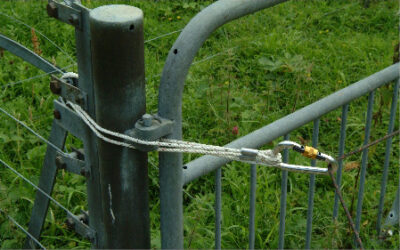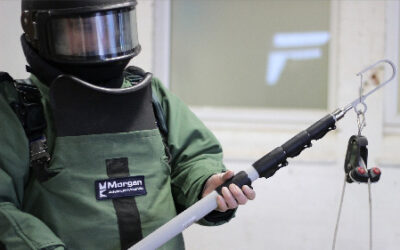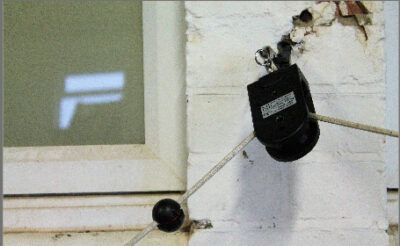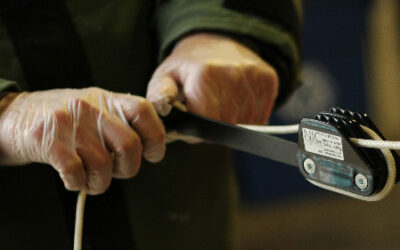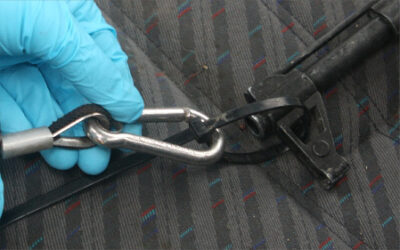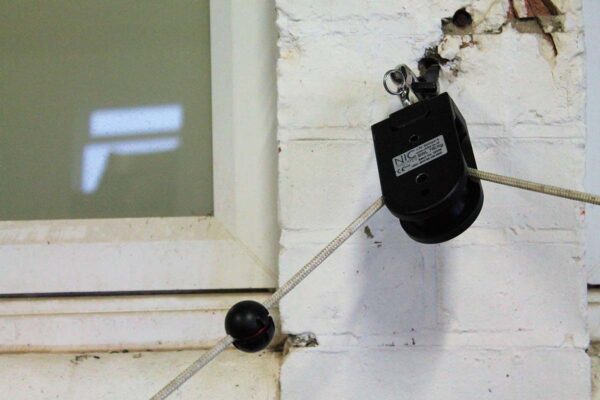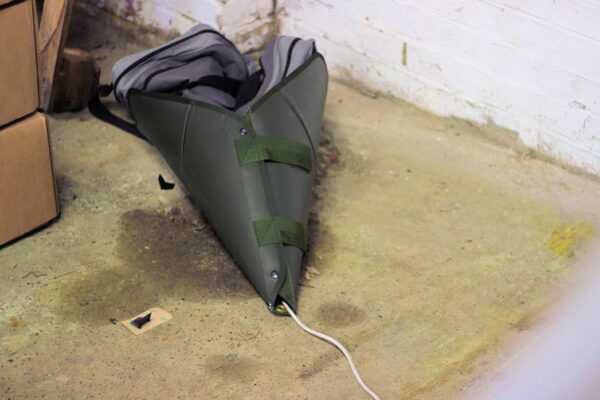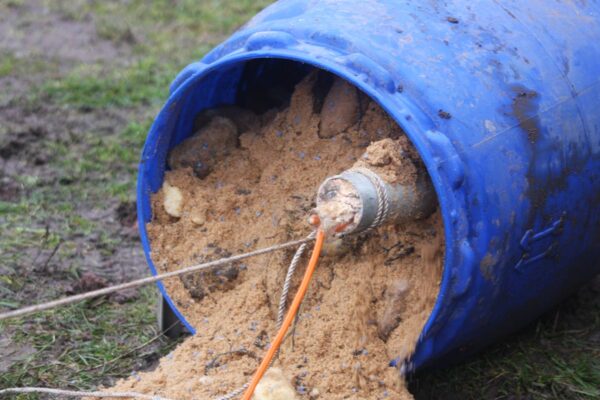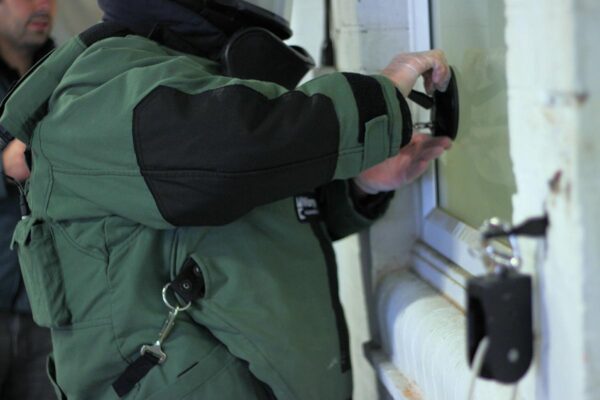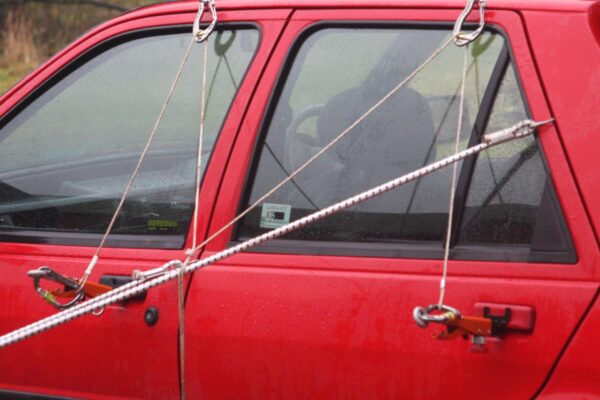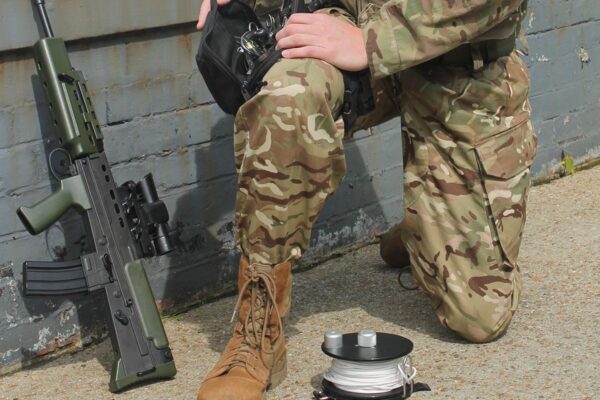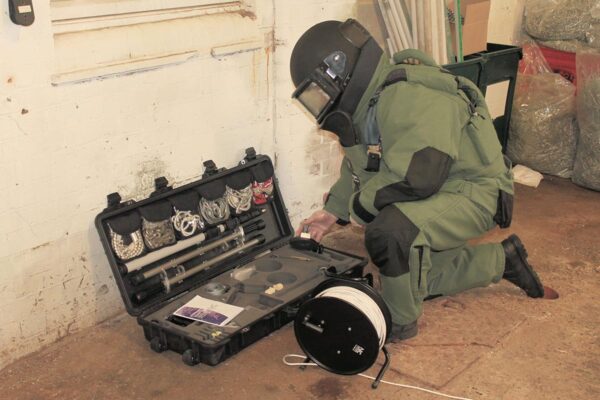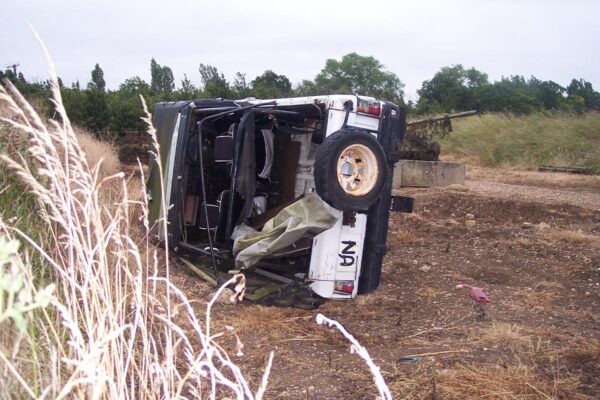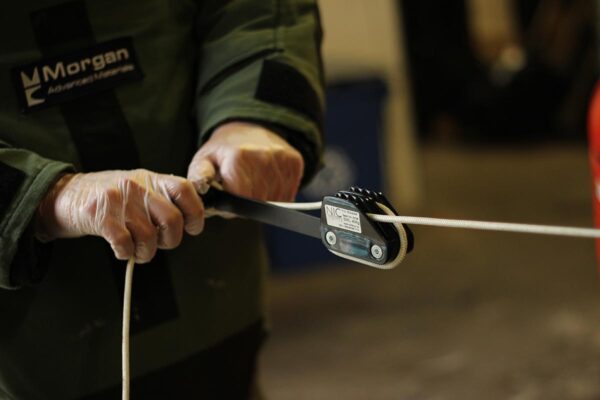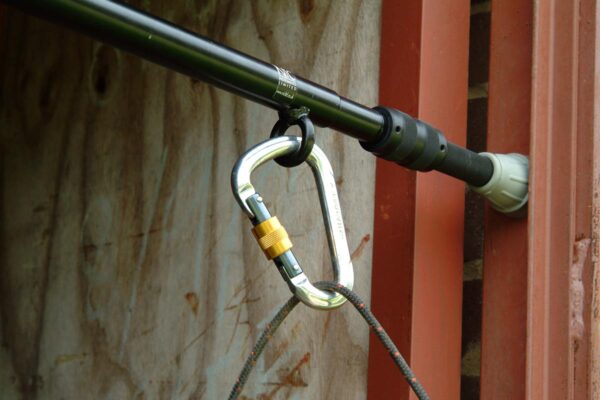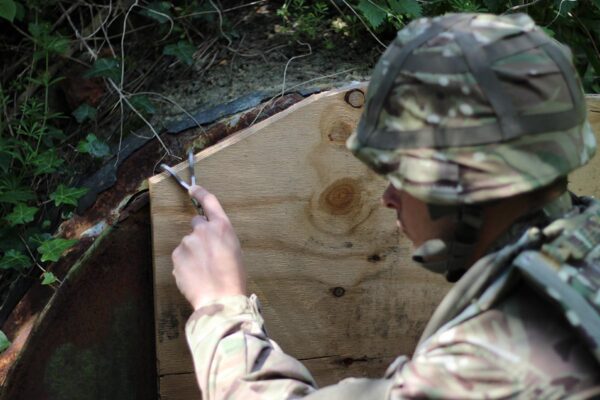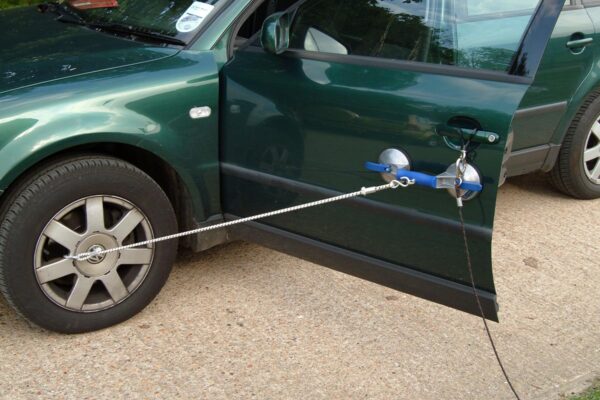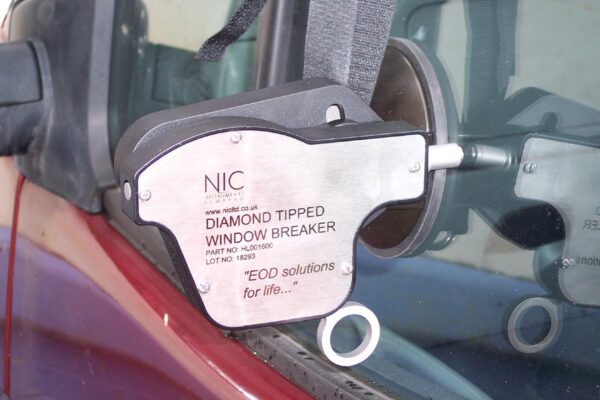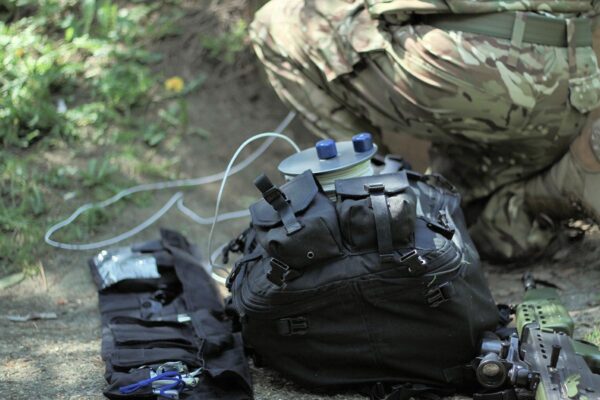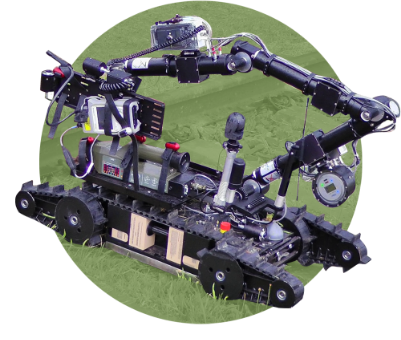- Depending on the situation and the Threat Assessment, an EOD Operator may not wish to move an item or gain access to a location by hand.
- In such cases the movement may be achieved by an attached line and ancillaries.
- Due to the dangerous nature of bomb disposal work, safety and safe working practices are key to any operation.
- Safe working distances can vary between 60–200 metres depending on the task but generally, the standard safe working distance from a briefcase sized object in a permissive environment is 100m.
- Any object when moved should be achieved in a controlled manner, as the Operator will always have to revert to manual operations once the semi-remote phase of the operation is complete.
- As such the equipment must be of the correct strength and design to allow the Operator as much control as possible during the “pull”.
- The Operator must be confident that their actions at the safe working area are consistent with what will occur at the target end, especially if they are conducting a pull out of line of sight.
The Principle of Hook and Line
- Hook and Line Systems
- The Principle of Hook and Line
- Before conducting a semi-remote action, the Operator must plan their actions fully at a safe distance.
- They should not leave the safe working area unless they are confident they have all the equipment necessary to set up a successful “pull” in one manual approach.
- The route to the target must also be planned and where necessary direction changes and access points must be secured to ensure the line is free to move during the “pull”. This is achieved using various pulleys and karabiners.
- If an object is to be removed from a room or a building completely, then an automatically opening snatch block can be used to ensure the object follows the line out, snag free.
- Coupled with the line and anchor tools RK & Sons has designed and produced a number of Secondary Tools which facilitate the use of the Hook & Line equipment in situations where normal attachments are difficult to achieve, or where experience has shown that without them a successful pull is sometimes less likely.
- These tools include the telescopic pole to aid attachments out of the operator’s reach, and a “skid pan” which assists in the unhindered passage of an item through a number of potential “snag” risks.
- RK & Sons Hook & Line kits come complete with a number of well thought out and designed anchor applications to ensure that the operator can always achieve a secure and strong pulley point. These include Rope Slings, Sticky Eyes, Suction pads, Karabiners, Hooks, Clamps, Grips & Stakes.
- Once the line has been laid the final task for the Operator is to attach the line to the suspect object.
- The final attachment will often be completed in a Bomb Suit. RK & Sons has designed the Hook & Line tools taking into account the reduced dexterity and manoeuvrability of a Bomb Suit, by producing tools which are easy to use and quick to deploy.
- Hook & Line has saved many IEDD Operators, Law Enforcement and Search Operators lives by separating them from danger during a positive action and by allowing them not to set patterns which are easily exploitable by criminal or terrorist groups.
- RK & Sons strives to innovate new systems which will aid the survivability of these personnel and add to the capability of those that place themselves in harm's way when trying to eradicate the explosive threat.
The 3 Capabilities
Hook & Line is classed into 3 capabilities :
- Essential, which includes basic capability.
- Routine which includes typical activities.
- Extensive which includes advanced tools to carry out specialist functions.
Essential Capability
- These systems are in use where the actions required are simple and uncomplicated such as the movement of threat items like weapons and bags in a find situation and moving items as part of an aggressive search.
- Essential Capability Hook and Line equipment is also used by de-mining teams to move items of ordnance away from critical infrastructure, into a safe area, for demolition.
- The Essential Capability Hook and Line Kits contain as a minimum hooks and attachments, pulleys, a reel of line and a storage system
Examples of Functionality:
- Moving objects in straight lines.
- Lifting items. Opening simple catches.
- Tipping items over to spill out contents. Routing of EOD weapon firing cables / communication links to avoid snagging.
- RK & Sons Instruments also manufactures specialist lightweight hook and line equipment for dismounted IEDD or Special Forces Operations.
- This equipment is designed to save space and weight by using state of the art technology to ensure that this saving does not compromise functionality.
Routine Capability
- These systems consist of all of the elements of the Essential Capability systems but with an increase in tools to carry out more complex hook and line tasks. Routine Capability kits would be typically carried as part of a complete EOD/IEDD team Kit.
- Routine Capability kits are used to provide assurance and assist EOD/IEDD Operators as part of a complete IEDD Team kit.
- A wide range of hook and line applications are available with this equipment, as part of any planned positive action during the render safe procedure
Examples of Functionality:
- Moving objects along complex routes with multiple changes of direction using pulleys that open automatically.
- Lockable pulleys to lock the line at a given point to hold open doors, car bonnets or lift carpets.
- Specialist anchor tools to fix pulleys on high points, in walls, concrete, wood, and hard or soft ground.
- Tools to mount and retrieve pulleys at heights of up to 3m.
- Specialist slings to open screw threaded items such as pipe bombs.
- Specialist search mirrors for IEDD Operators.
Examples of Functionality:
- These systems typically comprise of all aspects of the Routine Capability equipment but with specialist tools for specific tasks.
- These are generally carried by IEDD/EOD Teams with a requirement to conduct any and all hook and line tasks required as part of the render safe procedure.
- The Extensive Capability equipment will have both specialist tools designed for specific tasks and heavy duty tools and line to move objects in excess of 500Kg.
Extensive Capability
- Breaking vehicle glass non-explosively.
- Opening and holding open doors to allow access for a robot or operator
- Removing buried large main charges from the ground or from a vehicle main load carrying area
- Specialist tools to open vehicle doors, boot and bonnet
- Moving target vehicles at the conclusion of the render safe procedure providing assurance to the Incident Commander
- Specialist equipment for use on urban tasks such as key turners and specific anchors for use in buildings
The 3 Operational Theatres
Hook & Line equipment can be classed into 3 main categories:
- Dismounted for operators working on foot
- Normal for typical activities
- Heavy Duty for pulling heavier items such as vehicles
Dismounted Operations
Ultra light duty: A very small, compact system, designed for Special Forces, rapidly deployed, working dismounted.
Read More
Normal Operations
Normal duty:
The most popular size, with the widest range of tools. Typically used for moving objects weighing up to 500kg.
Read More
Heavy Duty Operations
Heavy duty:
Used for moving vehicles or heavy objects in excess of 500kg
Read More
The 7 Functions
Hook & Line has 7 main functions including:
- The Pulling Line
- Manipulating The Line
- Anchoring The Line
- Primary Attachment Tools
- Secondary Tools
- Advanced Tools
- Equipment Storage
The Pulling Line
- The core of the system consists of a high specification rope or line, which is laid in a planned route to the object to be moved.
- The action of pulling the line by the operator at the control point, results in a positive, and correctly controlled movement of the suspect object at the other end of the line.
Manipulating The Line
- A range of pulleys with various functions, and associated tools, are used to route and manipulate (move) the line correctly from the operator to the suspect object.
Anchoring The Line
- The pulleys, which route the line between operator and suspect object, are anchored or positioned, at locations along the route with a range of anchoring tools.
- These anchoring tools have been developed over many years to offer as wide a range of solutions as possible to anchor the pulleys along the route.
Primary Attachment Tools
- A range of primary tools that assists the operator in attaching the line to the suspect object.
- These tools include a wide selection of hooks, suction pads, sticky pads, grips and clamps.
- Many of these tools also double up to anchor pulleys along the route.
Secondary Tools
- A range of secondary tools that assists the operator in using the equipment effectively, or assisting the suspect object to be moved efficiently. Examples are items such as;
- Shock cords, which will pull a door open once the latch has been activated by the pulling line.
- Long telescopic poles allow the line to be deployed at greater heights, or over ground that is not secure.
- The skid pan assists in negotiating routes with sharp corners, where the suspect object that is being pulled, may become snagged.
Advanced Tools
- A range of advanced tools exists for complex tasks.
- Many of these tasks may be achieved with a range of the standard tools, but this range of advanced tools works more reliably, reduces the need for extensive training and practice, and can also reduce the time the operator is exposed to the suspect object. Examples of the advanced systems are:
- Tools to open car and building doors
- Window breakers
- Key turners
Equipment Storage
- A range of storage solutions are available.
- The primary systems are rigid, waterproof cases.
- A range of kits, with differing capability levels, can be stored in an effective modular system, so that only the equipment for each task needs to be deployed rather than large bulky cases, holding all the equipment.
- RK & Sons offers a backpack system, with removable compartments and side pouches.
- This offers a lightweight, dismounted option.
- The ultra-lightweight system is available in a tool roll or thigh pouch.
- This lightweight system can be easily stored in a backpack with other equipment.

